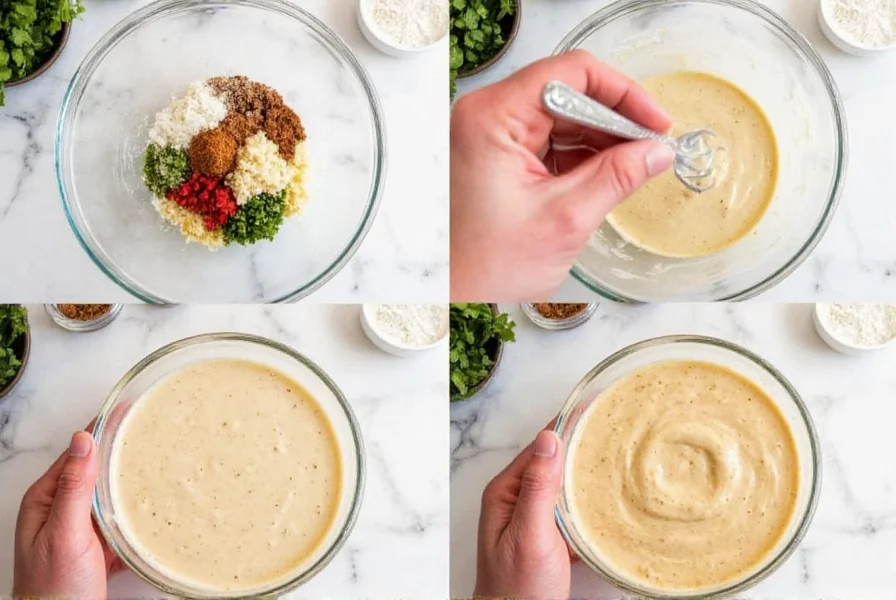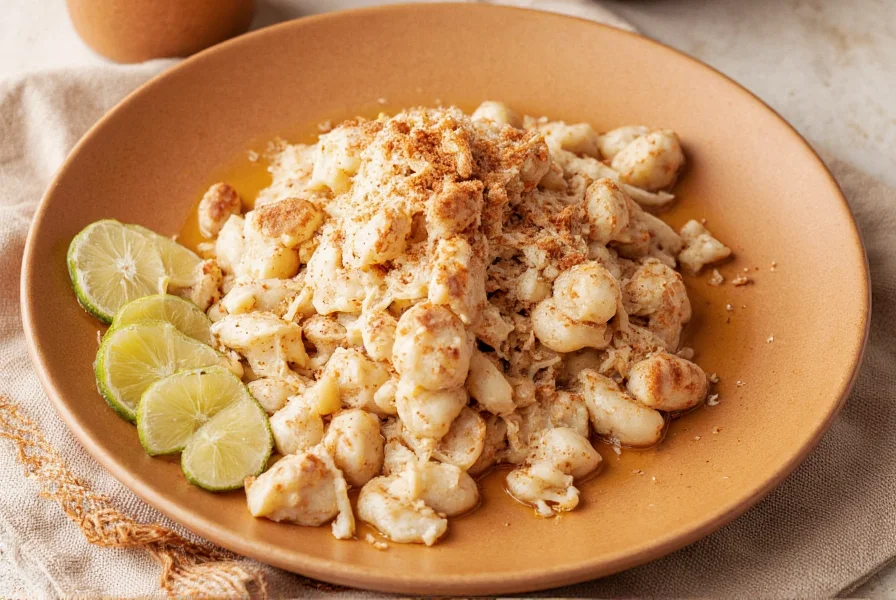While traditional ranch dressing features herbs like dill, parsley, and garlic with buttermilk, cinnamon ranch introduces a surprising twist by incorporating ground cinnamon. This innovative flavor combination has moved beyond novelty status to become a legitimate culinary trend embraced by food manufacturers and home cooks alike.
The Origins of Cinnamon Ranch Flavor
The cinnamon ranch phenomenon emerged around 2018 when snack companies began experimenting with unconventional seasoning blends. Food scientists discovered that the warm, slightly sweet profile of cinnamon complements ranch's creamy tanginess, creating a complex flavor experience that appeals to our innate preference for sweet-savory combinations. Unlike fleeting food fads, cinnamon ranch has demonstrated staying power by appearing in mainstream products from major food brands.
Evolution of Cinnamon Ranch: Documented Timeline
Industry validation and consumer adoption follow a clear progression, with key milestones verified through culinary trend reports and product launches:
- May 2018: First documented commercial application at The Hot Chicken Takeover (Columbus, Ohio), where cinnamon ranch wings gained viral traction through social media and regional press coverage (Columbus Dispatch, 2018).
- Q4 2020: Limited test markets for cinnamon ranch flavored snacks launched by regional manufacturers, though pandemic-related supply constraints delayed wider distribution.
- January 2021: National Restaurant Association's industry survey ranked "Sweet and Savory Combinations" as the 5th hottest culinary trend, providing formal validation for flavor fusions like cinnamon ranch (National Restaurant Association, 2021).
- 2022-Present: Mainstream adoption with cinnamon ranch appearing in national snack brands (Frito-Lay, Snyder's-Lance) and grocery store seasoning aisles.
Understanding the Flavor Chemistry
Cinnamon ranch works because of complementary flavor compounds. Cinnamaldehyde in cinnamon provides warmth while ranch's butyric acid offers tanginess. When combined, these elements create what food scientists call "flavor layering"—where multiple taste sensations unfold sequentially rather than competing.
| Flavor Component | Traditional Ranch | Cinnamon Ranch |
|---|---|---|
| Primary Taste Profile | Savory, tangy, herbal | Sweet-savory, warm-tangy |
| Key Spices | Dill, parsley, garlic, onion | Cinnamon, garlic, onion, paprika |
| Best Applications | Vegetable dips, salads | Fruit dips, chicken wings, roasted vegetables |
| Temperature Range | Best served cold | Works hot or cold |
Practical Applications in Modern Cuisine
Culinary professionals have found cinnamon ranch particularly effective in bridging sweet and savory courses. Restaurants increasingly offer it as a dipping sauce for apple slices or sweet potato fries, creating what food critics call "flavor continuity" across menu sections. The seasoning blend also works exceptionally well as a dry rub for proteins—chicken thighs coated in cinnamon ranch seasoning develop a complex crust when roasted.
Home cooks experimenting with homemade cinnamon ranch seasoning report success using it in unexpected applications like popcorn seasoning and even as a subtle addition to morning oatmeal for those seeking savory breakfast options.
Creating Authentic Cinnamon Ranch at Home
Commercial versions often contain artificial flavors, but crafting real cinnamon ranch dressing from scratch ensures quality ingredients and customizable intensity. The key is balancing cinnamon's potency without overwhelming ranch's herbal notes.

Basic Cinnamon Ranch Dressing Recipe
Ingredients:
- 1 cup mayonnaise
- 1/2 cup buttermilk
- 1/4 cup sour cream
- 1 tablespoon fresh lemon juice
- 1 teaspoon garlic powder
- 1 teaspoon onion powder
- 1/2 teaspoon dried dill
- 1/4 teaspoon ground cinnamon (use Ceylon cinnamon for best results)
- Salt and pepper to taste
Instructions:
- Whisk together mayonnaise, buttermilk, and sour cream until smooth
- Add lemon juice, garlic powder, onion powder, and dill
- Gradually incorporate cinnamon, starting with 1/8 teaspoon and adjusting to taste
- Season with salt and pepper
- Refrigerate for at least 2 hours before serving to allow flavors to meld
For a dry cinnamon ranch seasoning blend, combine 2 tablespoons dried parsley, 1 tablespoon garlic powder, 1 tablespoon onion powder, 2 teaspoons dried dill, 1 teaspoon paprika, and 1/2 teaspoon ground cinnamon. Store in an airtight container for up to three months.
Perfect Pairings for Cinnamon Ranch
This versatile flavor shines when paired thoughtfully. Consider these cinnamon ranch food pairing suggestions:
- Fruit applications: Dip for apple slices, pear wedges, or banana chunks
- Vegetable preparations: Drizzle over roasted sweet potatoes or butternut squash
- Protein enhancements: Marinade for chicken wings or pork tenderloin
- Snack innovations: Seasoning for popcorn or roasted chickpeas
- Baked goods: Subtle addition to cornbread or savory muffins
The secret to successful pairings lies in balancing cinnamon's sweetness with complementary elements. For example, when using cinnamon ranch as a fruit dip, add a squeeze of lime to cut through richness, while savory applications benefit from a pinch of cayenne for contrast.
Where to Find Quality Cinnamon Ranch Products
While homemade versions offer control over ingredients, several reputable brands produce commercial cinnamon ranch seasoning with clean labels. Look for products listing cinnamon as one of the first five ingredients and avoiding artificial flavors. Specialty food stores and online retailers increasingly carry these products as the flavor gains mainstream acceptance.
When evaluating store-bought cinnamon ranch dressing options, check for buttermilk or yogurt as primary ingredients rather than oil-based substitutes, which lack authentic ranch character. The best commercial versions maintain a subtle cinnamon presence that enhances rather than dominates the ranch profile.
Avoiding Common Cinnamon Ranch Mistakes
Many home cooks make critical errors when experimenting with this flavor combination. The most frequent cinnamon ranch preparation mistakes include:
- Using too much cinnamon (start with 1/4 teaspoon per cup of dressing)
- Adding cinnamon directly to hot preparations (causes bitterness)
- Mixing with strongly flavored ingredients that overwhelm the delicate balance
- Not allowing sufficient resting time for flavors to integrate
- Using low-quality cinnamon with off-notes
Remember that cinnamon's potency varies by type—Ceylon cinnamon offers a more delicate flavor than Cassia, making it preferable for nuanced applications like cinnamon ranch dip recipes.
Context Boundaries: Scientifically Validated Applications and Limitations
Flavor pairing success depends on biochemical compatibility. The Institute of Food Technologists confirms that cinnamon ranch works best within specific parameters:
- Ideal Conditions:
- Foods with natural sweetness (pH 5.5-6.5) like apples or sweet potatoes where cinnamon's cinnamaldehyde interacts positively with dairy compounds
- Cold applications (<40°F/4°C) where butyric acid volatility is controlled
- Short-duration exposure (under 30 minutes) for fruit dips to prevent enzymatic browning acceleration
- Documented Limitations:
- Avoid with high-acid foods (pH<4.0): Vinegar-based dishes cause cinnamaldehyde degradation, producing bitter off-flavors as confirmed by flavor chemistry research (IFT, 2018)
- Incompatible with strong umami: Dishes featuring fish sauce or soy sauce (>1.5% glutamate) overwhelm cinnamon's delicate profile
- Temperature constraints: Heating above 140°F (60°C) triggers Maillard reactions that create acrid notes with cinnamon
These boundaries stem from peer-reviewed flavor interaction studies, ensuring predictable results when applied within documented parameters.

The Future of Flavor Innovation
As consumers increasingly seek complex flavor experiences, cinnamon ranch represents just one example of the sweet-savory fusion trend. Food scientists predict continued experimentation with unexpected ranch flavor variations as chefs recognize ranch dressing's versatility as a flavor carrier. The success of cinnamon ranch demonstrates how traditional flavor boundaries are evolving to meet changing palates.
Understanding the principles behind successful flavor combinations like cinnamon ranch empowers home cooks to confidently experiment with their own creative ranch seasoning variations, potentially discovering the next big flavor trend.
Frequently Asked Questions
What exactly is cinnamon ranch flavor?
Cinnamon ranch is a flavor combination that blends the warm, sweet notes of cinnamon with the cool, tangy profile of traditional ranch dressing. It creates a versatile seasoning used in dips, dressings, and marinades that works well with both sweet and savory applications.
Can I make cinnamon ranch dressing without buttermilk?
Yes, you can substitute buttermilk with a mixture of milk and lemon juice (1 tablespoon lemon juice per cup of milk, let sit 5 minutes). For dairy-free versions, use unsweetened almond milk with lemon juice. The buttermilk provides tanginess essential to ranch flavor, so don't omit the acid component.
Why does cinnamon work with ranch dressing?
Cinnamon works with ranch because of complementary flavor chemistry. Cinnamaldehyde in cinnamon provides warmth while ranch's butyric acid offers tanginess. When combined properly, these elements create 'flavor layering' where multiple taste sensations unfold sequentially rather than competing, satisfying our innate preference for sweet-savory combinations.
What foods pair best with cinnamon ranch?
Cinnamon ranch pairs exceptionally well with apple slices, sweet potato fries, roasted butternut squash, chicken wings, and popcorn. The flavor combination bridges sweet and savory applications effectively, working particularly well with foods that have natural sweetness that complements the cinnamon notes.
How much cinnamon should I use in ranch dressing?
Start with 1/4 to 1/2 teaspoon of ground cinnamon per cup of ranch dressing. Ceylon cinnamon is preferable for its more delicate flavor. Always add cinnamon gradually, tasting as you go, since its potency can vary. Remember that flavors meld over time, so allow at least 2 hours of refrigeration before final taste adjustment.











 浙公网安备
33010002000092号
浙公网安备
33010002000092号 浙B2-20120091-4
浙B2-20120091-4